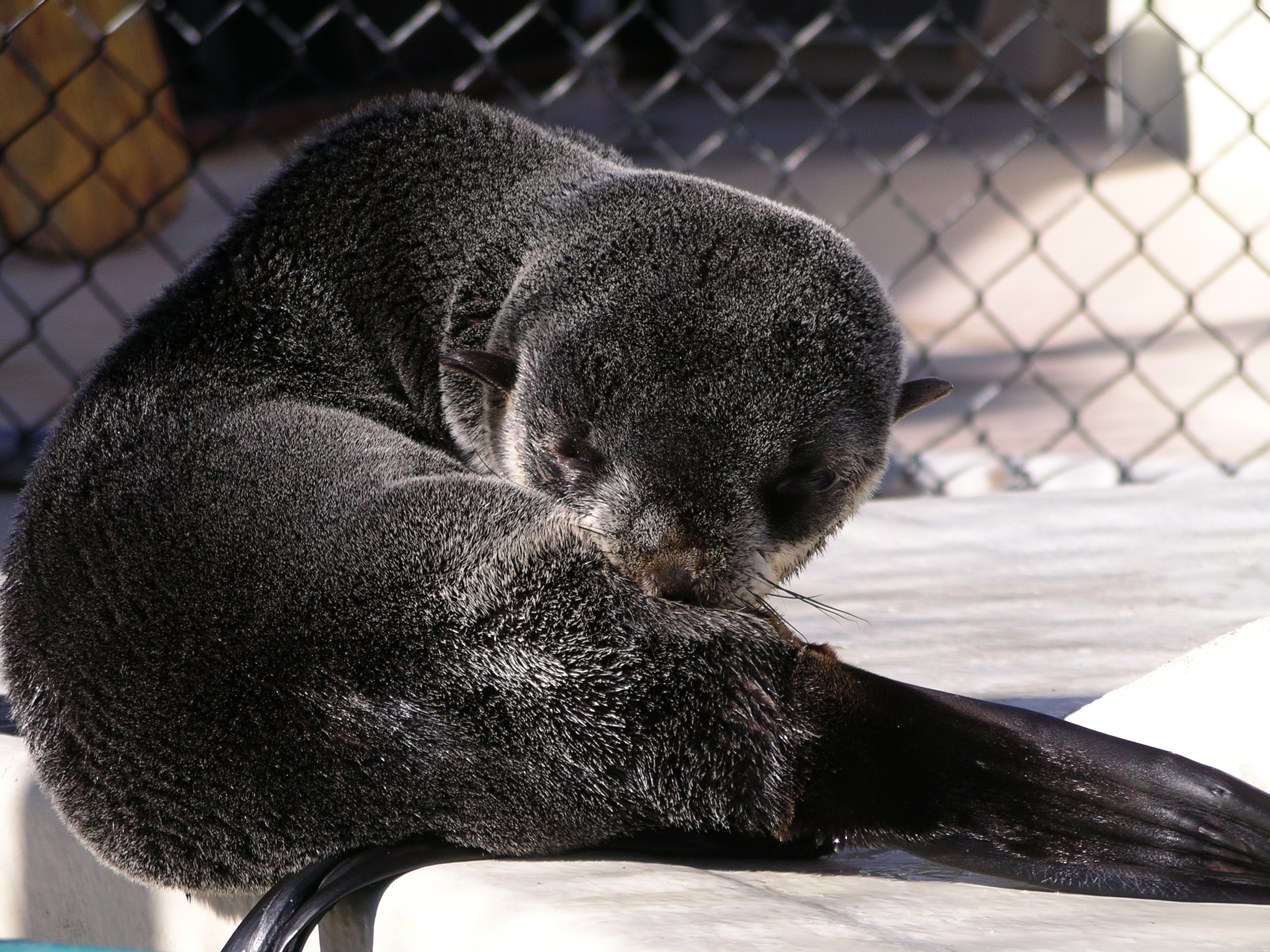
Northern fur seal (Callorhinus ursinus)
Phylum —chordata
Class — mammalia
Order — carnivora
Family — otariidae
Genus – callorhinus
Appearance
Northern fur seals are sexually dimorphic, with males (bulls) weighing from 180 to over 275 kg (maximum length of 213 cm), while females range from 40 to 50 kg (maximum length of 142 cm). This makes males up to 375% larger than females, which is unusually dimorphic. Adult males also develop short, bushy manes of contrasting, lighter-colored fur around their shoulders and neck, which are not often seen in the females. The color of the fur reflects its age, gender, and activities. At sea, females and young males typically have gray coats. While breeding on land, the fur typically becomes yellowish-brown from the mud and excrement on the rocks. Older males are usually brownish-black in color, but may also be dark gray or reddish-brown. Pups are born black with buff-colored markings along the sides, chin, axillary area, and muzzle; after 3 to 4 months, their pelage molts and they become gray.
Habitat
Northern fur seals inhabit the Northern Pacific Ocean from southern California to Japan and as far as the Bering Sea.
Behavior
Northern fur seals are carnivores hunting at night, being primarily nocturnal. They are relatively social, tending to be solitary during the feeding months of winter. They sometimes swim about in larger groups. Males show some aggressive territorial behavior towards other males when their territory is entered. Females do not develop any social bond with any other seals. A characteristic of these seals is returning to where they were born (called "philopatry"), males returning to stake out territory and females to give birth.
Diet
These seals are carnivorous, and eat mainly fish and cephalopods, mostly small fish from schools, such as anchovy, capelin and herring. They also eat squid and sometimes hake, rockfish, saury, and salmon.
Reproduction
These seals are polygynous and in one season a male can mate with as many as 50 females. Females come to shore from late June for a month. The males will have already staked out territories. Females usually give birth to just one pup each season, after a gestation of 51 weeks. A few days after giving birth, the female goes to sea for 8-14 days to feed, then returning to nurse her pup, who must consume enough milk to last for these absences. Pups are weaned when about 4 months old, at which time their mothers leave to migrate south for winter. Females are sexually mature between 4 and 6 years, males between 8 and 10.
Although it has been estimated that Northern fur seals can live up to 26 years or older, the average lifespan of males is only about 2 years and for females it is approximately 4.6 years, taking into consideration the high mortality rates of young.
Incaptivity
Northern fur seals live in captivity very well, get used to people and give in to training.
When keeping a seal, you must have a sufficiently deep (at least 1.5 meters) pool. The pool water should be cold all year round. In addition, it is desirable that the water is slightly salted (ideally sea salinity). If it is not possible to maintain the salinity of the water, you can keep the seal in fresh water, but at the same time add salt to the food and build a special feeder with salt water.
Northern fur seals are fed in captivity mainly with sea fish (herring, whiting, sprat, cod). Fish can be either fresh or frozen. In the first days of fish feeding, pups are given approximately 900 gr. of food per day, after a week it is already 2 kg of fish per day.
Multivitamins and fish oil are added to the feed. This is especially important when feeding babies. From vitamins add vitamins B1, B2, Undevit, Trivit.
 Russian
Russian
 English
English
























